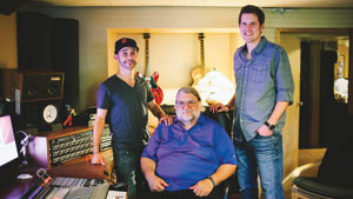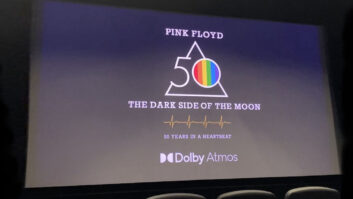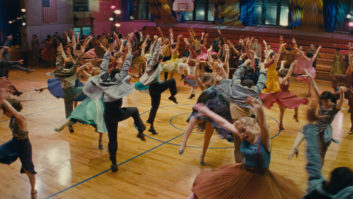The ink was barely dry on my January 2015 column about the dynamics of dealing with artists when I found myself in a situation where the tables had turned. This time, instead of the engineer and studio working with the artists, the situation worked against them.
I grew up in a household of small business owners in the service industry who lived by one motto—the customer is always right. If a problem comes up about the service that a client paid for, we worked hard to remedy the situation. The customer should feel like they’re getting their money’s worth. And just like it was in the pre-Internet world, word-of-mouth referrals are the best advertising. One could argue that, in an era dominated by social media, it’s more important than ever.
Even if you’re offering a “friend’s rate” or doing a project pro bono, you’re obliged to take the work just as seriously as if the client was paying full pop. Of course, you don’t have to go all out with these folks as you might do with top-tier clients, but you should, at the very least, show them the same amount of respect and courtesy while providing the same level of service you normally would. If you suspect these clients will take advantage of your good nature, listen to your intuition and don’t make the offer, or say no when they ask.
Most music professionals have negotiated both sides of this issue at some point in their career: They have asked for a rate cut for projects that have little or no budget, as well as entertained bids from clients working on limited means. When I’ve been asked to provide my services for free or for less than I usually charge, I’ll say yes only if I can give it my all and feel good about it. Otherwise, the answer is no. Pro bono doesn’t translate from the Latin as half-assed job.
All or Nothing
In this recent situation as a sideman, I was taking part in the latter half of a half-day session. I arrived after the first part of the date was done to find my mic in position and ready for me to set up—perfect. After a quick level-check with all the players—woodwinds, brass, and percussion—we were ready to roll. And that’s when things got interesting.
The first piece had a long, soft ending, with the full ensemble navigating the entrances and dynamics very well. Suddenly, a new sound joined in: The air conditioning had come on, adding a low rumble to the mix. But we finished the take, bringing our sounds to silence. A few moments later, as the musicians discussed the merits of the take, the engineer walked through the tracking studio to an adjacent room and turned off the AC without comment or acknowledgement.
A few takes later, another quiet section, but this time voices could be heard chatting from the control room, clearly distracting the musicians. When the piece was finished, and after the long pause to let things die out, we asked the engineer from the studio if we could keep it rolling and do another take.
Silence.
A few moments, later, the engineer appeared and asked us to repeat the question because he was talking to someone.
If I had known that we wouldn’t have an engineer paying attention as we recorded, I would have suggested we do the session ourselves somewhere else. A couple of us in the group have the gear and know-how to do it.
One reason tech-savvy artists occasionally choose not to record themselves is that they want to be able to stay in the creative space and let someone else deal with any problems that come up. But for that to happen, the person on the other end of the glass needs to be paying full attention. The players shouldn’t be the only ones asking if the drummer accidentally hit the snare mic or whether that sudden fortissimo blast from the trumpet caused clipping. That’s information the client needs to know immediately after the take, not something left for them to discover after they’ve taken the files home.
Unfortunately, this wasn’t an isolated case: I’ve had previous experiences in this studio where, for example, I found dropouts in the media after the session. Later, when I alerted the engineer about the problems, his only reply was “Oh,” followed by a long silence. He didn’t ask to hear the dropouts, offer to edit them out, or even suggest that he would check his gear to see if it was a recurring problem. Since then, his studio has upgraded a few things, but the attitude toward the client doesn’t seem to have changed.
Of course, there will always be technical issues that arise during a session. What makes a studio and its staff worth the expenditure is how such problems are handled. It doesn’t matter if you run a home studio or a professional one: Do the job to the best of your ability so the client feels at ease. That should be a no-brainer, especially considering the current state of the studio biz, where customer satisfaction is more important than ever.





